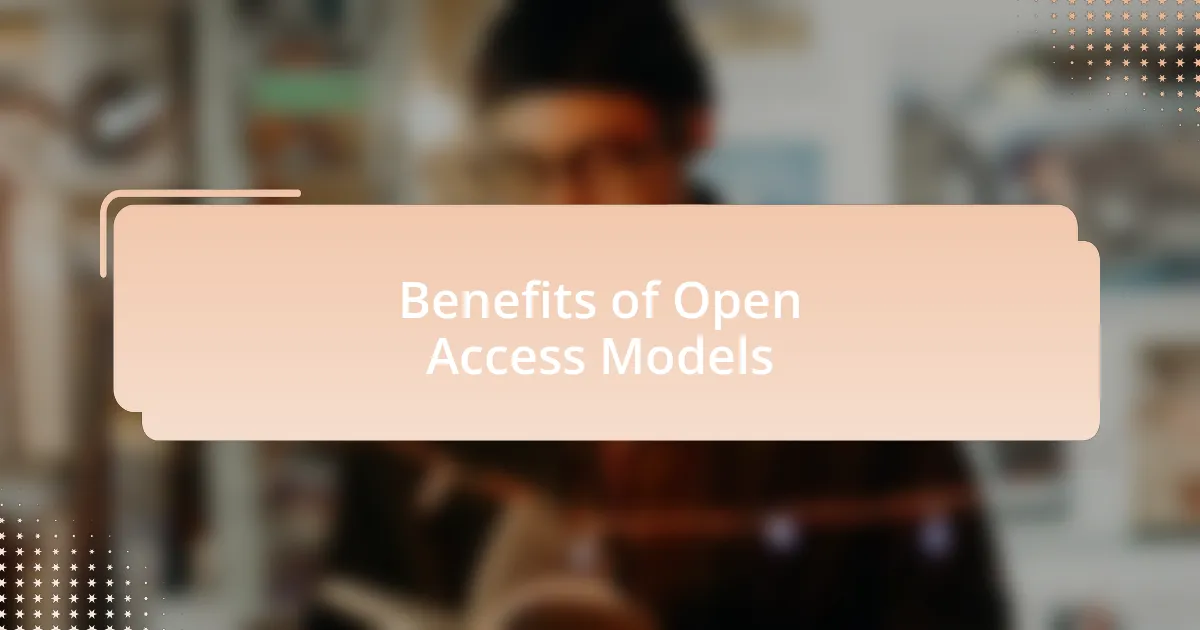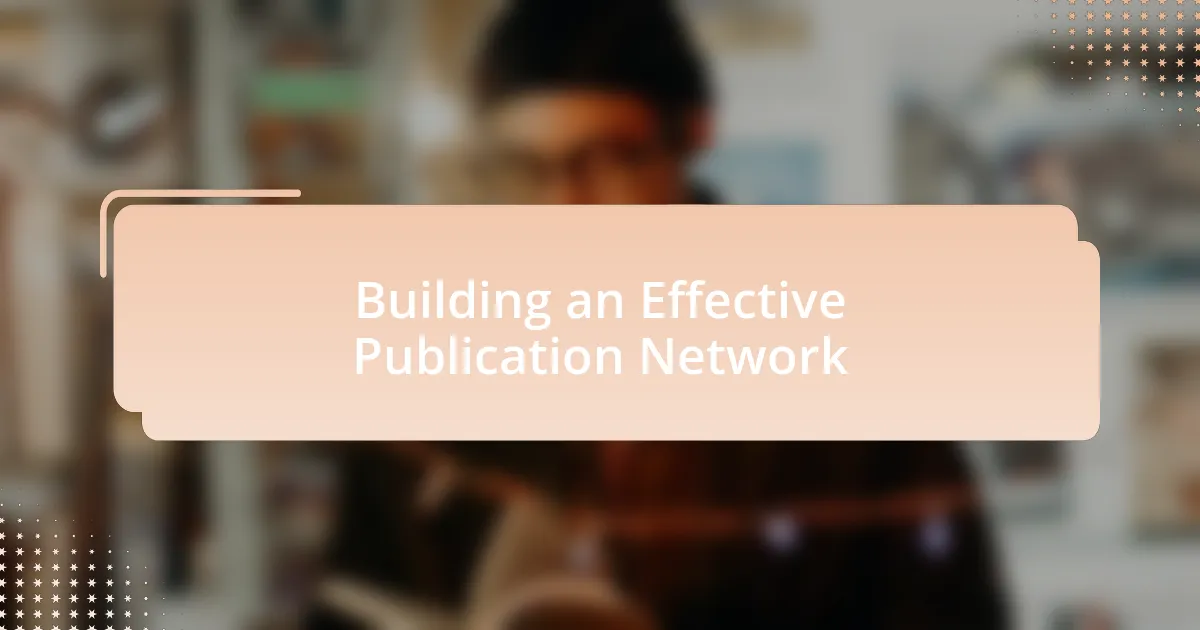Key takeaways:
- Open access publishing democratizes access to research, allowing broader dissemination of knowledge without paywalls.
- Immediate reach and increased citations are significant benefits of open access, enhancing visibility and collaboration opportunities for researchers.
- Challenges include predatory journals and high Article Processing Charges (APCs), which can hinder researchers, especially from underfunded institutions.
- Building a publication network through conferences and social media enhances collaboration and visibility in the open access landscape.

Understanding Open Access Publishing
Open access publishing represents a paradigm shift in how research is shared and accessed. Unlike traditional publishing, which often confines academic work behind paywalls, open access allows anyone—regardless of institutional affiliation—to access scholarly articles for free. I remember the first time I accessed a crucial study without having to go through a library subscription. It was liberating and made me realize the immense potential for sharing knowledge more broadly.
Consider this: how often have you faced barriers due to paywalls when searching for specific research? It’s frustrating, right? For me, open access has not only enhanced my own research, but it has also fostered a vibrant community of scholars who can exchange ideas freely. This model encourages collaborative research and democratizes access to knowledge, creating a more equitable environment for everyone involved in academia.
Moreover, there are various routes to achieving open access, such as through publication in open access journals or self-archiving in institutional repositories. I recall the painstaking journey of navigating these options before publishing my work, trying to balance quality and accessibility. In my experience, understanding these avenues can significantly influence the visibility and impact of your research, ultimately shaping how it contributes to the wider academic discourse.

Benefits of Open Access Models
The benefits of open access models are vast and profound. One of the most significant advantages is the immediate reach it provides for research findings. I vividly recall sharing my recent paper online and receiving feedback from researchers in different countries within days. It made me realize how quickly knowledge can circulate when barriers are removed.
Another appealing aspect is the potential for increased citations. Research suggests that papers published through open access tend to garner more citations than those behind paywalls. I’ve experienced this firsthand; my work received attention I never anticipated, leading to collaborative opportunities that enriched my research journey. Isn’t it fascinating how simply making your work accessible can open so many doors?
Additionally, open access fosters transparency and accountability in research. As I dove deeper into various disciplines, I found that transparency allows readers to scrutinize methods and data. It’s reassuring to know that in an open access environment, my work can be validated and built upon by others. This collective drive for higher standards benefits us all in our scholarly pursuits.

Key Challenges in Open Access
The landscape of open access publishing presents significant challenges that can sometimes overshadow its benefits. One predominant issue is the prevalence of predatory journals, which lure researchers with promises of quick publication but often lack rigorous peer review. I remember a colleague of mine who faced great disappointment after publishing in such a journal; the lack of quality control diluted the impact of her valuable research. How disheartening it must be to invest so much effort only to see it misrepresented in a subpar venue?
Another challenge is the funding model that often underpins open access publishing. Many high-quality journals require authors to pay Article Processing Charges (APCs), which can be a barrier for researchers, especially those from underfunded institutions or developing countries. I once encountered this situation myself when I wanted to publish a pivotal study, but the fees made it seem almost unattainable. Isn’t it tough to think that financial constraints can hinder the dissemination of knowledge?
Moreover, the transition to open access can disrupt traditional scholarly communication structures. Some academics are still navigating this shift, feeling uncertain about how to adapt to new publishing norms. I’ve had candid conversations with peers who express frustration over the evolving requirements in submitting to reputable open access journals. Isn’t it crucial for us all to find common ground and understanding as we charge forward in this exciting yet challenging new realm?

Building an Effective Publication Network
Building an effective publication network can be a game-changer in the open access landscape. For me, it started with actively attending academic conferences where I interacted with fellow researchers. The relationships I built there not only provided collaboration opportunities but also opened doors to reputable journals that I might not have considered otherwise. Talk about serendipity!
Networking is not just about exchanging business cards; it’s about nurturing relationships that can foster mutual support. I’ve made it a point to connect with authors who share similar interests, often discussing challenges and strategies we face in our field. This back-and-forth exchange has led to co-authored papers that have significantly expanded my reach and credibility. Isn’t it inspiring how collaboration can elevate not just our work, but the entire academic community?
Additionally, leveraging social media platforms has proven invaluable for my publication network. I remember a time when I shared my research findings on Twitter, and it sparked a lively discussion with researchers worldwide. The visibility not only increased my engagement but also caught the attention of journal editors looking for fresh insights. Isn’t it fascinating how a simple tweet can lead to meaningful connections and opportunities for publication?